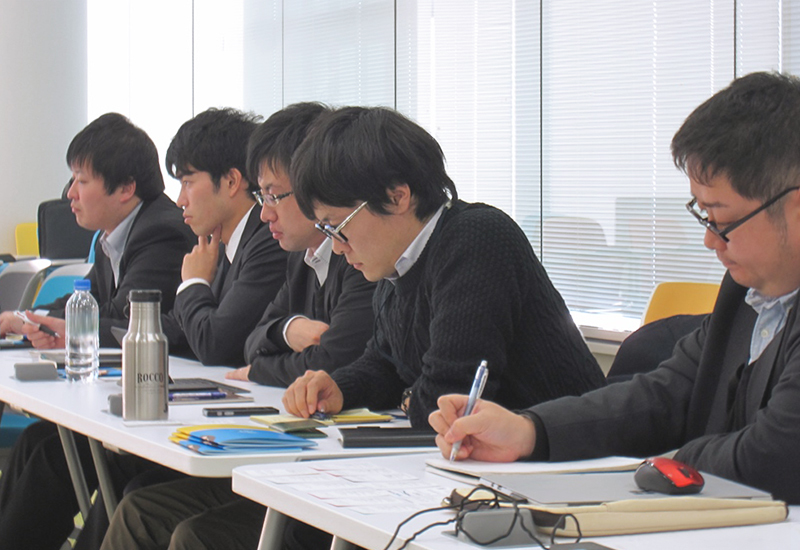My mother, my wife, and I. The usual New Year's osechi dishes. The usual group gathered around the table. My mother exhausted from the preparations? Also the usual. Should we have Takamatsu-style "an mochi" in our ozoni, or square mochi in clear soup? The little squabbles right after the New Year? Also the usual. No special guests, nothing to do besides visiting the neighborhood shrine for hatsumōde. Just lazing around? Also the usual.
To find happiness in such an ordinary life... I guess I'm getting old too.
Now then. The other day, I had the chance to talk with local government officials undergoing a year-long training program at Dentsu Inc. H.D. Thoreau, author of Walden, or Life in the Woods, also said, "The old man, in fact, cannot give the young man any real advice." Instead of preparing materials and giving a one-sided "lecture" that day, we had a thorough, frank "discussion." The theme was "What makes regional revitalization projects so difficult?" As we candidly shared our struggles, the issues boiled down to two main points.
One was "Is there even a purpose here?" and "Actually, the purpose is often vague." Even when there's a shared sense of direction like "revitalizing the region," it's not uncommon for projects to start without clearly sharing what specific state they're aiming for.
For example, "halting population decline" is a major goal for most municipalities. However, because it's so difficult to achieve, the goal is often shifted to "gaining recognition for the city name." Now then. If this "recognition" means simply being widely known by name, is that really necessary? Take Kamiyama Town in Tokushima Prefecture, hailed as the "Miracle of Kamiyama," or Nagareyama City in Chiba Prefecture, which specifically targeted "dual-income households raising children." Were these places really that "highly recognized"? Probably not. While recognition might not hurt, it doesn't seem to stop population decline either. So, why pursue "gaining recognition for the city's name" in the first place? It becomes unclear.
Another concern was "Are people actually there?" and "Surprisingly few cases involve people genuinely wanting to change the current situation."
For example, "Are shuttered shopping districts truly struggling?" While some undoubtedly face hardship, I know cases where property values remain strong or the space is used as housing, and the owners don't actually want it revitalized.
Or take the trend of branding primary products across Japan. Surprisingly few people think, "Let's challenge something others aren't doing and create a unique brand." For instance, with premium Wagyu beef, several groups had already completed overseas expansion and started business. Then, brands nationwide jumped in all at once, flooding the market. I've heard that in a certain Asian country recently, this led to oversupply and even a "price war" has started.
It's not exactly the famous "boiling frog" scenario, but if all you can manage is a uniform approach, breaking out of the current situation will be quite difficult.
Thinking about it, two essential elements for supporting corporate innovation are "having a clear vision at the management level" (meaning "having a clear purpose") and "having middle management who will drive change" (meaning "having people who will proactively push forward"). In that sense, the private sector and government are no different.
That said, the passion of the young civil servants who participated was incredible! Far from the often-cited image of "safe but rigid civil servants," we were able to exchange frank, honest opinions, making it a truly stimulating time.
Well then. This year, I intend to keep challenging myself in various ways without getting too old for it, and I'll report back here on this page.

Enjoy!











